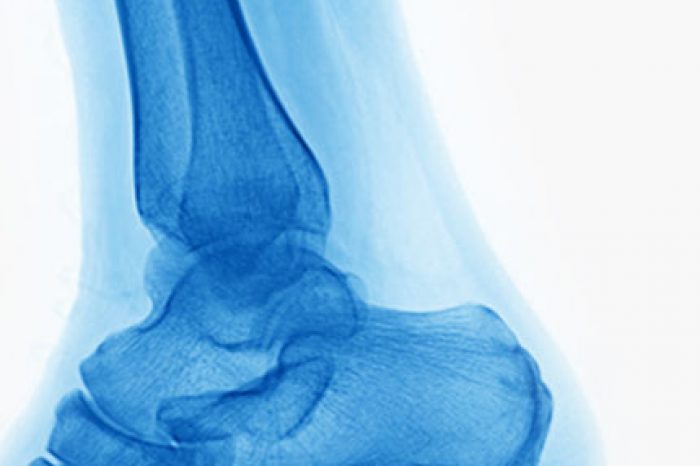

Achilles tendon injuries, especially chronic tears, have long posed a significant challenge for both patients and clinicians. Traditionally, the standard approach for serious tendon tears has been surgical intervention, often involving tendon transfers or grafts that require long recovery periods and carry the risk of complications. However, emerging regenerative therapies are shifting the treatment landscape—and among the most promising of these is adipose cellular injection.
In a case report published in the Bio Orthopedic Journal, a 66-year-old male with a severe, chronic Achilles tendon tear achieved near-complete recovery using a minimally invasive procedure involving micro-fragmented adipose tissue (MFAT). The case underscores the therapeutic potential of adipose-derived mesenchymal stem cells, and suggests a viable alternative for patients who either cannot undergo surgery or are looking to avoid it (Iuso et al, 2022).
In this case report, the patient had been experiencing pain and weakness in his right Achilles tendon for over a year. Imaging studies, including MRI and ultrasound, confirmed a large partial-thickness intra-substance Achilles tendon tear. The initial recommendation was for surgical management. While surgery can effectively repair some Achilles injuries, it’s not without drawbacks—such as infection risk, re-rupture, scarring, and extended immobilization.
Instead, the patient decided to have an ultrasound-guided injection of micro-fragmented adipose tissue (MFAT) rich in adipose-derived mesenchymal stem cells, harvested from his own body.
Adipose tissue, commonly known as fat, is rich in mesenchymal stem cells (MSCs), which are known for their regenerative capabilities. These cells play a crucial role in healing by promoting collagen synthesis, reducing inflammation, and encouraging the growth of new blood vessels (angiogenesis) (Iuso et al, 2022; Costa-Almeida et al, 2019). When processed into a micro-fragmented form, adipose tissue becomes injectable and can be precisely delivered to damaged tissue sites, such as a tendon tear
Further studies demonstrated that extracellular vesicles within adipose-derived stem cells (ADSCs) can enhance tendon repair by reducing inflammation and promoting intrinsic healing. For instance, Shen et al. showed that extracellular vesicles from primed ADSCs reduced inflammation and promoted collagen deposition in a mouse model of Achilles tendon injury, leading to faster functional recovery (Shen & Lane, 2023). Additionally, Chen et al. found that ADSC-derived extracellular vesicles significantly improved the mechanical strength and histological properties of repaired tendons in a rabbit model (Chen et al, 2021).
In this case, 85 mL of fat was harvested from the patient’s flanks, then processed to yield 28 mL of injectable MFAT. Under ultrasound guidance, 14 mL was carefully introduced into the Achilles tendon defect (Iuso et al, 2022).
Surgical intervention, such as tendon transfers or grafts, are typically required when the extent of the tear makes the tendon unsuitable for direct repair. These procedures involve longer immobilization periods and carry risks such as wound infections, nerve injuries, and deep vein thrombosis (Saggar et al, 2025; Shoap et al, 2023; Maffulli et al, 2023; Schweitzer et al, 2018).
A 2012 meta-analysis found no significant difference in re-rupture rates between surgical and non-surgical treatments when early range of motion is incorporated into conservative care. This supports the effectiveness and safety of non-surgical routes, emphasizing that functional rehabilitation can yield comparable outcomes to surgery without the associated risks (Ochen et al, 2019; Soroceanu et al, 2012).The mesenchymal stem cells within adipose tissue are thought to influence tissue healing through several pathways.
Adipose-derived mesenchymal stem cells are more abundant and easier to harvest compared to bone marrow-derived MSCs (BM-MSCs).
Adipose-derived mesenchymal stem cells have shown comparable, if not superior, efficacy in promoting
tissue repair due to their higher yield and potent immunomodulatory
properties (Sabol et al, 2021; Costa-Almeida et al, 2019).
While both adipose tissue and PRP are used in regenerative therapies, adipose tissue, particularly MFAT, has shown superior outcomes in tendon healing due to its higher content of mesenchymal stem cells and the ability to provide a scaffold-like environment. PRP primarily works through the release of growth factors but lacks the cellular components and structural support provided by MFAT (Schroeder et al, 2020).
It’s important to note that this was a single-patient case study, and results may vary. While the outcome was positive, more research—including randomized controlled trials—is needed to validate the efficacy of adipose cellular injections in a broader population.
Still, this case adds to a growing body of literature suggesting that orthobiologic treatments like MFAT injections are effective for Achilles tendinopathy. For individuals suffering from chronic Achilles tendon injuries, especially those resistant to conservative therapies or looking to avoid surgery, adipose cellular injections offer a new and promising path forward.
Chen SH, Chen ZY, Lin YH, Chen SH, Chou PY, Kao HK, Lin FH. Extracellular Vesicles of Adipose-Derived Stem Cells Promote the Healing of Traumatized Achilles Tendons. Int J Mol Sci. 2021 Nov 16;22(22):12373.
Costa-Almeida R, Calejo I, Gomes ME. Mesenchymal Stem Cells Empowering Tendon Regenerative Therapies. Int J Mol Sci. 2019 Jun 19;20(12):3002.
Guo B, Sawkulycz X, Heidari N, Rogers R, Liu D, Slevin M. Characterisation of Novel Angiogenic and Potent Anti-Inflammatory Effects of Micro-Fragmented Adipose Tissue. Int J Mol Sci. 2021 Mar 23;22(6):3271.
Iuso AM, Pacik D, Martin J, Oakes D, Malanga GA. Adipose cellular injection in the treatment of an intrasubstance Achilles tendon defect: a case report. Regen Med. 2022 Nov;17(11):835-843.
Jiang L, Lu J, Chen Y, Lyu K, Long L, Wang X, Liu T, Li S. Mesenchymal stem cells: An efficient cell therapy for tendon repair (Review). Int J Mol Med. 2023 Aug;52(2):70.
Maffulli N, Bartoli A, Sammaria G, Migliorini F, Karlsson J, Oliva F. Free tendon grafts for surgical management of chronic tears of the main body of the Achilles tendon: a systematic review. Knee Surg Sports Traumatol Arthrosc. 2023 Oct;31(10):4526-4538.
Ochen Y, Beks RB, van Heijl M, Hietbrink F, Leenen LPH, van der Velde D, Heng M, van der Meijden O, Groenwold RHH, Houwert RM. Operative treatment versus nonoperative treatment of Achilles tendon ruptures: systematic review and meta-analysis. BMJ. 2019 Jan 7;364:k5120.
Sabol RA, Bowles AC, Côté A, Wise R, Pashos N, Bunnell BA. Therapeutic Potential of Adipose Stem Cells. Adv Exp Med Biol. 2021;1341:15-25.
Saggar R, Mullen J, Mangone PG, Hogan MV. Achilles Tendon Ruptures: Nonsurgical Versus Surgical Treatment. Arthroscopy. 2025 May;41(5):1252-1254.
Schroeder A, Rubin JP, Kokai L, Sowa G, Chen J, Onishi K. Use of Adipose-Derived Orthobiologics for Musculoskeletal Injuries: A Narrative Review. PM R. 2020 Aug;12(8):805-816.
Schweitzer KM Jr, Dekker TJ, Adams SB. Chronic Achilles Ruptures: Reconstructive Options. J Am Acad Orthop Surg. 2018 Nov 1;26(21):753-763.
Shen H, Lane RA. Extracellular Vesicles From Primed Adipose-Derived Stem Cells Enhance Achilles Tendon Repair by Reducing Inflammation and Promoting Intrinsic Healing. Stem Cells. 2023 Jun 15;41(6):617-627.
Shoap S, Backer HC, Freibott CE, Ferrer XE, Polzer H, Turner Vosseller J. Rerupture and wound complications following Achilles tendon repair: A systematic review. J Orthop Res. 2023 Apr;41(4):845-851.
Soroceanu A, Sidhwa F, Aarabi S, Kaufman A, Glazebrook M. Surgical versus nonsurgical treatment of acute Achilles tendon rupture: a meta-analysis of randomized trials. J Bone Joint Surg Am. 2012 Dec 5;94(23):2136-43.
Viganò M, Lugano G, Perucca Orfei C, Menon A, Ragni E, Colombini A, De Luca P, Randelli P, de Girolamo L. Autologous Microfragmented Adipose Tissue Reduces the Catabolic and Fibrosis Response in an In Vitro Model of Tendon Cell Inflammation. Stem Cells Int. 2019 Dec 5;2019:5620286.
Adductor longus selective tenotomy is a modern surgical treatment for chronic groin pain that offers faster recovery and better outcomes than traditional full release surgery. The adductor longus, an inner thigh
Read MoreDiscover how ultrasound helps diagnose plantar fat pad atrophy, a leading cause of ball-of-foot pain. Learn about symptoms, thickness cutoffs, and why early detection matters for relief.
Read More